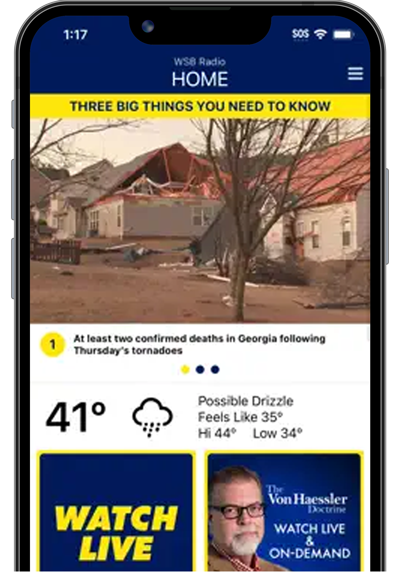As a mother of two, Robin Funsten knows it’s impossible to bathe her 2-year-old without getting water in the toddler's mouth. But she's never had to worry about that until recently.
A month after deadly Hurricane Helene devastated the U.S. Southeast, Funsten and more than 100,000 residents on city water in western North Carolina remain on an indefinite boil water notice as workers clear sediment from reservoirs and run water quality tests. Residents have described water that reeks of chlorine and is brown or yellow.
As much of the U.S.'s water infrastructure ages and climate change fuels disasters, experts say water advisories will become more common.
"We are in the midst of an uncertain time, not just in Asheville, but as we think about climate change writ large in some of these major unexpected storms," said David Dyjack, executive director of the National Environmental Health Association.
Boil water notices are given when microbes in tap water could be dangerous if ingested. They're different than do-not-drink water advisories — issued when chemicals or toxins in tap water could cause sickness if swallowed or inhaled – and do-not-use notices for water that could be dangerous to even touch.
“Do not drink” means only bottled water should be consumed. “Do not touch” means bottled water should be used for all purposes.
As Funsten noted, water safety guidelines can be confusing, and the discolored water isn't reassuring. “Because it still feels so unclear to me, I’d rather be safe than sick,” she said about choosing to shower at a facility using a different source than tap water.
Experts emphasize residents should follow safety guidelines from local authorities, as every situation is unique and safety measures may vary by personal risk. Amid these guidelines are personal decisions people can take for their own comfort, much like Funsten did.
Ultimately, the most important thing is to avoid drinking water straight from the tap, said Natalie Exum, environmental health scientist at John Hopkins Bloomberg School of Public Health. “What we need to be primarily concerned about is water ... that should be boiled before it goes into your body, because there could be a lot of microbial contamination there.”
Here are some tips from experts and the Centers for Disease Control and Prevention when under a boil water advisory.
The CDC says to bring water to a full rolling boil for one minute. At elevations above 6,500 feet (1,981 meters), boil for three minutes. To prevent burns, allow water to cool before drinking it or giving it to pets. Bottled water is also a safe alternative. If on a private well that experienced flooding or damage, contact your local health officials for testing guidance before using the water, even if you boil it.
Boil water or use bottled water for drinking, to make ice and to prepare or cook food. If making pasta, for example, boil the water for a full minute first before adding. Wash and rinse fruits and vegetables with boiled, then cooled, water.
In many cases, it is OK to use tap water and soap to wash your hands during a boil water advisory, according to the CDC, but it’s important to follow advice from local officials.
Dyjack recommends using at least a 60% alcohol disinfectant after washing your hands with tap water.
Exum stressed that washing your hands is “critically important” during water advisories.
If you have an open wound or rash, keep it clean and covered to prevent infection from exposure to contaminated water.
Use boiled water if hand-washing dishes. Alternatively, wash dishes with detergent and hot water as you normally would, then soak them for at least one minute in a separate bin with bleach – one tablespoon of unscented bleach per gallon of water. Air dry them completely before use.
The CDC says dishwashers are generally safe if they have a sanitize cycle or if the hot wash reaches at least 150°F (66°C), but local guidelines can vary, including Asheville's, which recommends 170°F (77°C). Check the manual or contact the manufacturer to find out how high your dishwater temperature reaches.
Under a boil water advisory, it can be safe to bathe or shower if you avoid swallowing water. Avoid shaving nicks.
If you have an open wound, Jasen Kunz, with the CDC's waterborne disease prevention branch, advised not to bathe. “You would need to provide an alternative source for that water or consider boiling it and letting it cool before using it.”
Use boiled then cooled or bottled water to brush your teeth.
Unless you received a “Do not use” water notice, it is safe to do laundry. But note that sediment in the water may discolor clothing. Ensure clothes are dry before wearing.
If you or a family member fall into any of these groups, experts suggest extra safety measures.
They recommend giving babies and young children sponge baths to reduce chances of swallowing water.
Dyjack said it's best not to shower or bathe someone from these groups using tap water.
Breastfeeding is the best option for feeding an infant when there's a boil water notice, according to the CDC. If you feed your child formula, provide ready-to-use formula if possible. If you must make formula, use water that has been boiled and cooled, or use bottled water.
While a generally healthy person may be OK if they accidentally sip contaminated water, Exum said vulnerable people are more likely to get sick, dehydrate faster or feel other symptoms. “So you really are just trying to avoid these hospital visits that can be very scary and very draining on the hospital resources.”
Dyjack, from the National Environmental Health Association, encouraged local governments to address residents’ uncertainty and questions through public meetings, podcasts, websites, listservs or by setting up a 24/7 water hotline.
“It’s important to put a face on it and allow people to express themselves," he said. “When a community and local government collaborate to solve an issue, there’s nothing that they can’t accomplish.”
Funsten, the Asheville resident, said having unsafe water adds chores, time and “big changes to our routine.” She’s opted to use other water sources instead of boiling the tap water.
Others, like Katherine Hyde Hensley, a perinatal psychologist in the area, described feeling “fried” by the mental toll of living with non-potable water on top of helping other mothers navigate their own anxieties about it.
Although water might not be restored as quickly as electricity after a disaster, Exum said, “It will come back. You will be OK... Just try and get through each day."
———
The Associated Press receives support from the Walton Family Foundation for coverage of water and environmental policy. The AP is solely responsible for all content. For all of AP's environmental coverage, visit https://apnews.com/hub/climate-and-environment.
Copyright 2024 The Associated Press. All rights reserved. This material may not be published, broadcast, rewritten or redistributed without permission.

:quality(70)/cloudfront-us-east-1.images.arcpublishing.com/cmg/KEKKWSFLUISNXPI6EXTZBEOZIE.jpg)
:quality(70)/cloudfront-us-east-1.images.arcpublishing.com/cmg/7QGYAAIJMJEPFK6E4RYGCKPBKI.jpg)
:quality(70)/cloudfront-us-east-1.images.arcpublishing.com/cmg/YJKOPHKYMRCINFXQYC2SE5LWHI.jpg)
:quality(70)/cloudfront-us-east-1.images.arcpublishing.com/cmg/B7IHPA5LQRDZNKIOHMGEM7UKV4.jpg)



